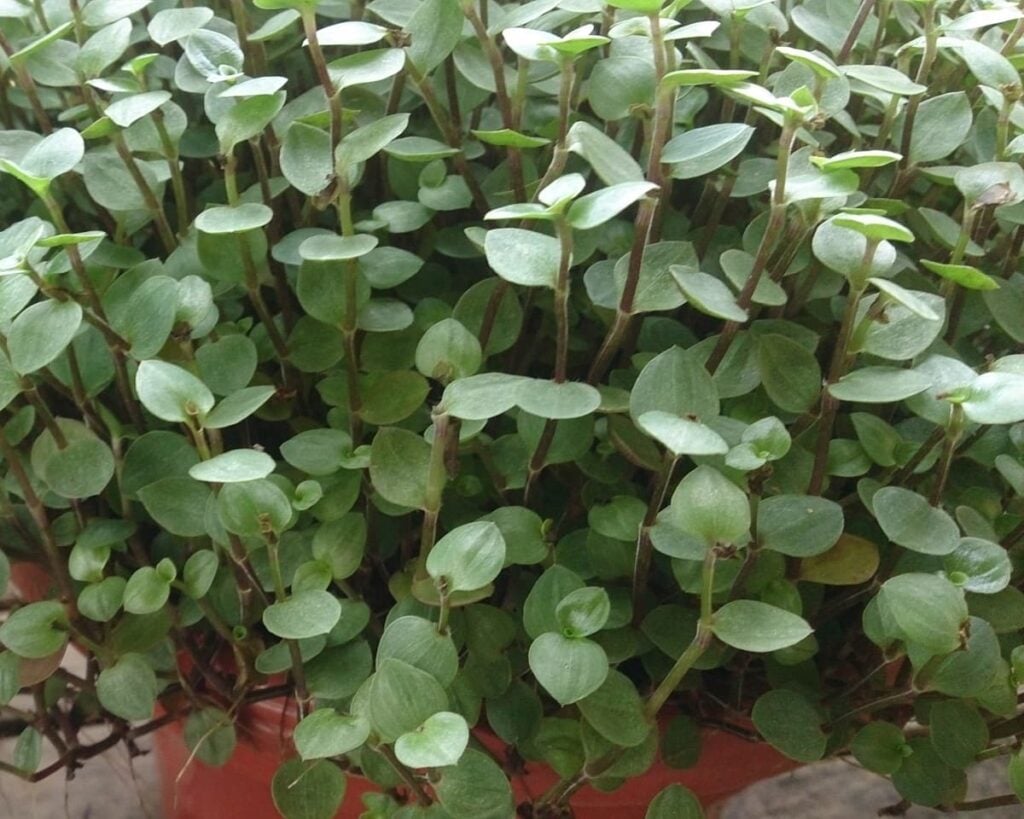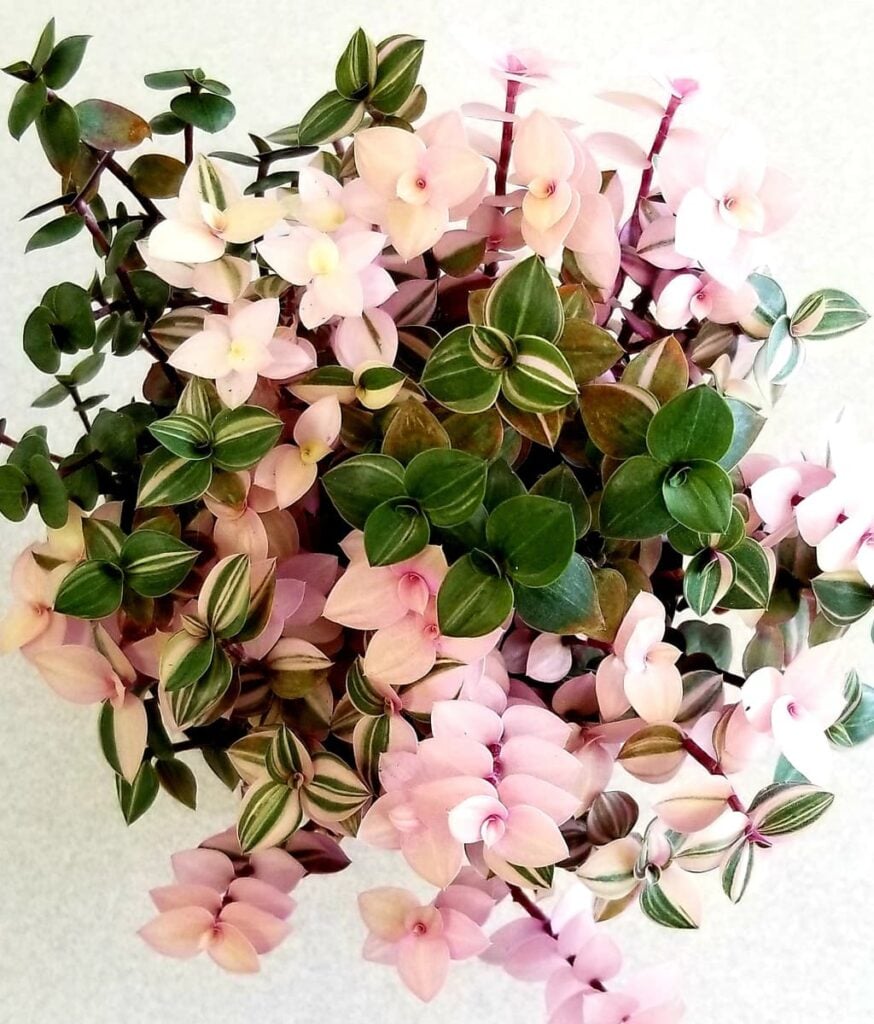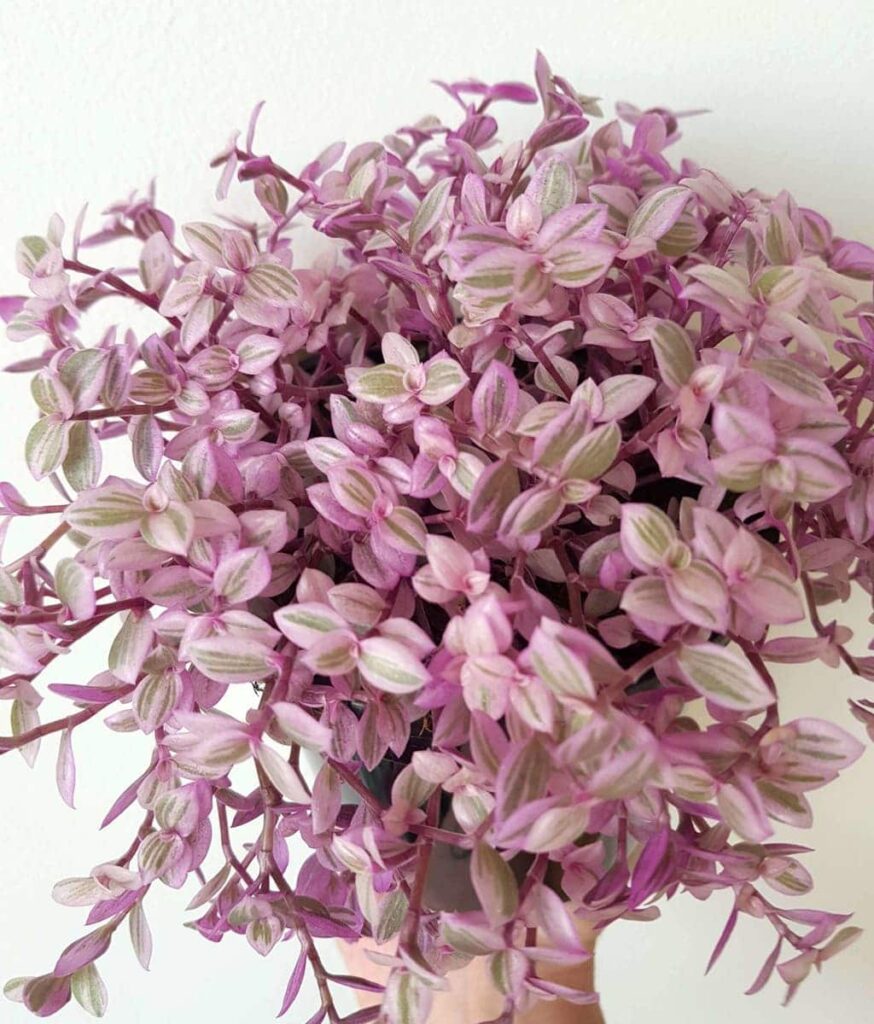Everything You Need to Know about Callisia Care

Best known by the common name Bolivian Wandering Jew, Callisia is a member of the spiderwort, Commelinaceae family, native throughout South America, the Caribbean, and Central America. Like spider plant, Callisia basket plant sends out plantlets that can easily be snipped off and planted to propagate new plants. Its foliage feels rubbery and it has small, white, very fragrant flowers.
Callisia Care
Callisia care is minimal. Simply hang a basket of the plant in low to medium light. Water it every 2-3 days. During spring, summer and fall, fertilize basket plants with a regular 10-10-10 fertilizer monthly. In the winter, stop fertilizing and water less frequently.
Light
Callisia plants prefer bright light to partial shade. Access to bright light helps keep the plant healthy and reduce the risk of it becoming straggly.
Soil
Moisture is of utmost importance to a callisia plant, so opt for a soil blend that retains water well. When used as potted plants or in a hanging basket, turtle vine does best in a standard potting mix or a peat mix. A similarly, organic-rich soil works well when planting in a garden.
Water
Dwarf Jew plant benefits from regular watering to ensure the soil remains moist during the growing season. Occasional misting of the foliage also helps to keep leaves from drying out and developing brown marks. Avoid over-watering and allow the surface of the turtle vine soil to dry out during the winter.

Temperature and Humidity
The Callisia Repens prefers a warm and humid environment. Ideally, it may also be grown as a houseplant in a sunny spot that never drops below 16 degrees Celsius. Average humidity found in the home is more than enough to occupy a Callisia. If the leaf-tips begin to brown over, it could be a sign of too low humidity; either finely mist the foliage weekly or introduce a humidity tray to keep life happy.
Fertilizer
During summer, a bit of liquid fertilizer every 10 to 14 days will encourage dense foliage. Supplement using a ‘houseplant’ labelled feed every two weeks in the growing period, and monthly for the rest of the year.

Common Problems
- Symptom: Wilting, sunken and yellowed leaves and stunted growth
Cause: Under-watering or root rot - Symptom: Sun scorch, browning or crispy leaves, dry leaf-edges, sunken leaves or stunted growth
Cause: Too much sunlight - Symptom: Loss of variegations and leggy inter-nodes
Cause: Too little light - Symptom: Browning of leaf tips with yellow halos
Cause: Too low humidity - Symptom: Yellowing older leaves
Cause: Over-watering
While the turtle vine requires very little maintenance overall, pinching the stem tips will help the turtle vine stay compact. Additionally, they may become leggy after two years. At that point, you may choose to replace them with a cutting.
As you have read above the callisia care is not that hard and if you live in the humid parts of the country, you won’t have to do much for callisia care. But if you are in much hotter or cooler place, read this callisia care properly and get accustomed to it.
Callisia care reference: TheSpruce, UKHouseplants
